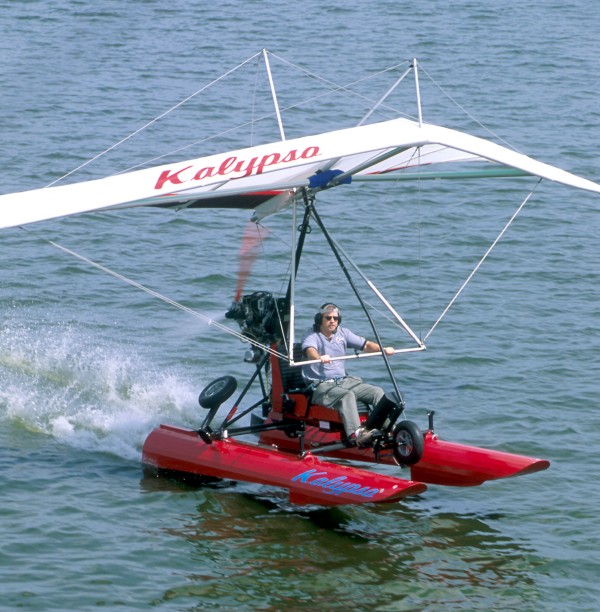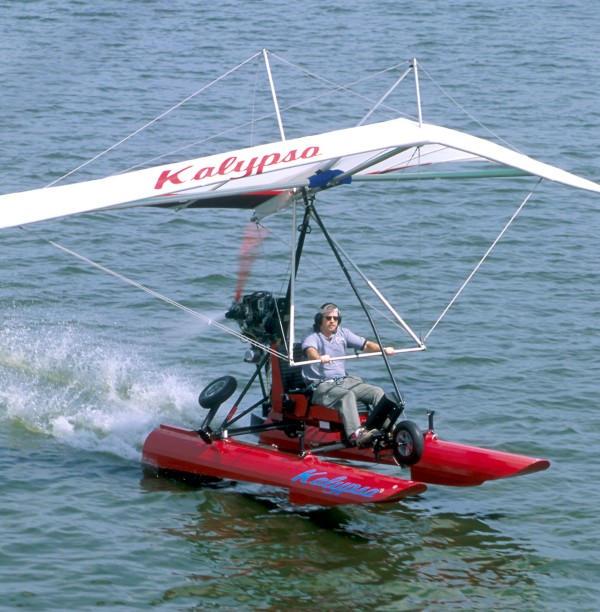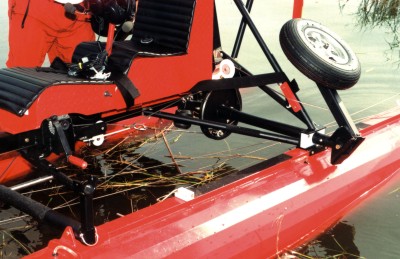
My computer dictionary says Calypso is “A sea nymph who delayed Odysseus on her island for 7 years.” It is also the name of one of Saturn’s moons, a flower, and a West Indian musical style. Any of these meanings infer a pleasant experience, a sensation sure to be duplicated by the ultralight amphibious Kalypso (spelled with a “K”) with its Krücker-designed floats. I don’t know if the Kalypso is enough to keep you stuck on an island for 7 years, but I found her to be a most desirable ultralight. Take It Home with You Trikes are highly mobile aircraft. One reason they became so popular in Europe and even here in the roomier US of A is that they break down easily. You can carry a trike in a pickup truck – with the right hardware added to properly support chassis and wing. Or you can use a small trailer and carry the wing on your car or truck.










